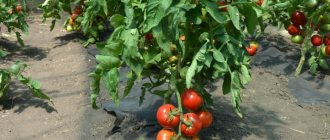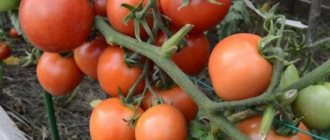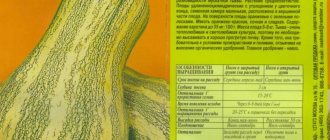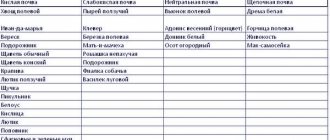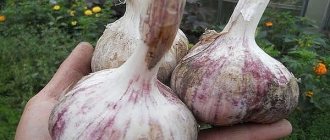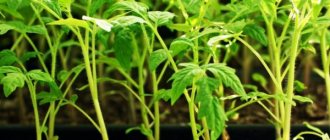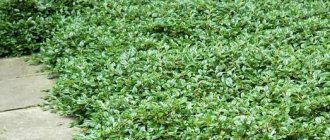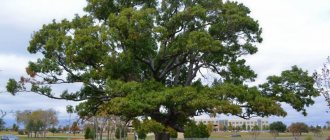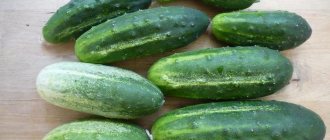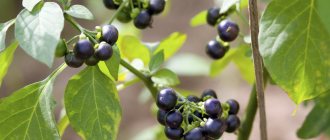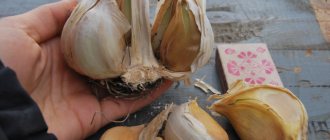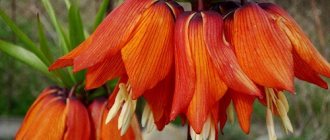How is buckwheat grown? This is an important question, because buckwheat has long been perceived exclusively as a grain crop, and only very recently gardeners have paid attention to other beneficial qualities of the plant. In addition to its undeniable medicinal properties, buckwheat is an excellent green manure that increases the level of fertility of even the heaviest and most acidified soil.
This is a beautiful and structural plant that holds its shape well and is excellent for use in landscape design. Let's talk in more detail about how buckwheat is grown.
How to grow buckwheat and the main characteristics of the plant
Lat. Fagopyrum esculentum
The natural habitat of the plant is East and Southeast Asia. Buckwheat is not picky about the soil and is capable of producing a good harvest even in the poorest and heaviest soils; this biological feature allows it to be grown in central Russia and in certain climatic conditions in the Far East and Western Siberia.
Buckwheat has two types:
Ordinary (edible, sowing) is the main type of plant; the porridge familiar to everyone is made from its fruits.
This is an annual plant that reaches up to 1 meter in height. It has a bare stem, large leaves and a taproot system. Small flowers are formed in a brush, in normal temperature conditions they are white in color, but during cold weather they acquire a pink tint. Despite the fact that buckwheat is a grain crop, the fruits of the plant are triangular nuts, reaching a length of up to 6.5 mm. Buckwheat reproduces by seeds.
Tatarian (kyrlyk) - unlike ordinary buckwheat, it is less demanding on soil cultivation and more resistant to low temperatures. It is characterized by thick-skinned small fruits and is therefore used as livestock feed or green manure in household plots.
The main conditions for growing plants are temperature. Its optimum is quite narrow - at temperatures below + 13° C, plant development slows down, when it rises above + 25° C, pollination stops.
Buckwheat is known as a capricious crop, the yield of which is not stable. And only a constructive approach to the plant and knowledge of agricultural techniques help achieve high yields.
Buckwheat: main varieties and varieties
Buckwheat is an annual herbaceous plant. It belongs to the buckwheat family. Conventionally, buckwheat can be divided into two main types: cultivated and Tatar. The latter is characterized by low growth, wide branching, small, odorless flowers and fruits that are ovoid in shape and small in size.
Cultivated buckwheat has a large, tall stem with straight branching. During ripening, the stems become bright red. The root system of the plant is not particularly developed and makes up no more than 15% of the total weight. The fruits are in the form of nuts of light gray, dark brown or even black.
Buckwheat has high nutritional, taste and dietary value. It is rich in organic acids (oxalic, citric, etc.). Its proteins are rich in amino acids necessary for the human body. Buckwheat also contains B vitamins, potassium, phosphorus and iron in quantities exceeding their content in other cereals.
The most popular and high-yielding varieties of buckwheat include the following (detailed photos with descriptions can be found on the Internet):
- Inzerskaya. This variety tolerates dry climates well and is very resistant to shedding and lodging. The grain of the plant is large and even. The variety gives an excellent harvest.
- Irmenka. An early ripening variety with a growing season of 2-2.5 months. It is also very resistant to shedding and lodging. The grain is of high quality.
- Natasha. A fast-ripening variety with a growing season of within 2 months. Like previous varieties, it is resistant to lodging and shedding. Ripe grains are very large.
- Dialogue. A mid-season variety that produces a good harvest in the form of not very large grains.
The importance of grain crops in the household
7 reasons to plant buckwheat in your garden:
First of all, it is a valuable cereal known for its dietary and nutritional properties for the human body. Its chemical composition contains a lot of potassium, calcium, iodine, zinc and iron. The fruits of the plant contain a large amount of vitamins.
Buckwheat is an insurance crop; if early plantings die, it is planted in the vacant space as green manure.
Growing buckwheat
The plant displaces weeds, suppresses and kills them at the root, leaving behind a perfectly clean area.
The waste remaining from grain dehulling, straw and chaff is an excellent feed for livestock. The ground husk or ash from it is a useful fertilizer for the garden. It is characterized by specific root secretions that reduce the susceptibility of other crops to rot.
The plant is an excellent honey plant and is one of the most important crops for beekeeping. Planting buckwheat in a plot is a great way to attract beneficial insects to it.
The leaves of the plant have medicinal properties - antiseptic and sedative.
Harvesting buckwheat
Due to the long period of ripening of buckwheat (25-35 days), the size of the grown crop largely depends on the correct choice of timing and harvesting methods. During the ripening period, one plant has ripe and green fruits, flowers and buds. In wet weather, ripening is extended, and in dry weather, fruit formation stops. It is possible to resume the process of fruit formation if drought gives way to wet weather.
The increase in grain weight stops when its moisture content decreases to 36-40%; the moisture content of the stems and leaves at this time remains high and amounts to 50-65%. The fruits in the lower tier of the plant ripen first. Ripe fruits fall off easily.
Buckwheat is harvested separately when the plants turn brown - 67-75% of the fruit. Buckwheat mowing into windrows is carried out in the morning, at a relative humidity of at least 55%. When the moisture content of the grain in the windrows decreases to 14-16% (2-4 days after mowing), threshing begins, which is carried out at a reduced drum rotation speed (500-600 min¯¹), using Niva, KS - 4, KS - 5, KS - 6, "Kolos", DON - 1500, Yenisei, etc.
Leaving buckwheat in windrows for a long time is unacceptable, since overdried fruits easily fall off, which leads to large yield losses.
Soil preparation
Buckwheat grows well in sunny areas, protected from dry winds. Any type of soil is suitable for growing grain crops, with the only condition in terms of mechanical composition that it must be loamy or sandy loam, the acidity of which is close to neutral. In highly acidified soils with a podzolic horizon of more than 10 cm, slaked lime is added at the rate of 0.5 kg per 1 sq. m.
In autumn, autumn plowing or digging of the site is carried out, at the same time phosphorus and potassium fertilizers are introduced. A snow-retaining barrier, which is made from improvised means, will play a good role in moistening the soil.
In the spring, the top layer of soil is loosened, harrowed and nitrogen fertilizers are applied. Digging should be done only if there is excessive compaction and excess moisture.
Plant predecessors
The ideal predecessors of buckwheat are plants that enrich the soil with plowed crop residues and with a developed root system that increases soil looseness. All legumes and winter crops have these qualities, as well as:
- potato,
- corn,
- lupine,
- linen.
Buckwheat is not recommended to be planted after oats or potatoes affected by nematodes. The plant itself, as a phytosanitary, is an excellent precursor for sugar beets, potatoes, corn, and all fruits and grains.
Combination of buckwheat with other plants
The best predecessors for buckwheat are representatives of the legume family. In addition, crops such as corn, flax, potatoes, sugar beets, etc. can be considered good predecessors. In no case should you allow buckwheat to be sown in areas where nematode-affected potatoes or oats were previously located.
There is an excellent combination of buckwheat and cabbage, with the former acting as a kind of protector, masking the latter from voracious butterflies, moths and cutworms with a wide “carpet”.
Our material has come to an end. We introduced you to the technology of growing buckwheat in open ground. Follow all the requirements for caring for this plant and you will get a rich harvest. Good luck!
Preparing seeds for sowing
Buckwheat flowering
To obtain a good harvest, zoned seeds are used, adapted to the climatic characteristics of the area. Their pre-sowing preparation significantly increases their yield:
- selection of large and heavy seeds of the first class;
- dressing with fungicides to prevent fungal and bacterial diseases;
- treatment with microfertilizers containing molybdenum ammonium or boric acid;
- air-thermal heating 5 days before planting; for this, the seeds are scattered on a dry surface in a well-lit, dry room and mixed periodically.
Pre-sowing seed treatment performed in this way significantly increases yield.
Moon phases
The lunar month lasts 29.5 days. During this period, the moon makes a full revolution around the Earth and goes through 4 phases:
- New moon
- First quarter or waxing moon
- Full moon
- Last quarter or waning moon
The influence of moon phases on plants
- The new moon is the worst time for gardening work. Do not plant or replant anything. This unfavorable period lasts three days, the day before the new moon, the new moon and the day after.
- Growing Moon - The Moon grows itself and pulls up the energy and juices of plants. This is the best time to work with plants whose fruits ripen above the ground (greens, herbs, fruits, vegetables, flowers). You can plant, replant, graft, and so on.
- Full moon - during this period it is also not recommended for planting and replanting plants, but it lasts one day. You can do weeding, fertilizing, and treating the garden from pests.
- Waning Moon - juices and energy are directed down to the roots, so try to work with root vegetables, bulbous ones.
What does “first quarter” and “third quarter” mean in the Lunar calendar
After the new moon, the Moon begins to grow, its crescent appears in the sky and gradually increases in size. At some point in the lunar month, it turns out that exactly half of the lunar disk appears illuminated to us, and the other half is not visible. This phase of the synodic lunar month is called the first quarter.
In the third quarter or last quarter, we again see exactly half of the Moon, but this is already a waning, aging Moon. It's like a mirror image of the first quarter.
See also: Favorable days for planting flowers in February 2020 according to the lunar calendar: what flowers are planted for seedlings
Is it possible to visually determine what phase the Moon is in, whether it is waxing or waning?
Yes, you can. It's very easy to do.
Look at the Moon and mentally place a pencil near its “horns”. If you get the correct letter “P”, it means the Moon is waxing, but if you get “P” on the contrary, something similar to the letter “U”, it means waning.
There are some more rules and recommendations that should be followed:
- It is best to plant plants at dawn or before lunch.
- When the Moon is waxing, use mineral supplements.
- When decreasing - organic.
What plants can be planted on the waxing Moon?
The waxing moon is a favorable phase for the growth and reproduction of plants, the period of their most intensive growth.
During the waxing Moon phase, it is favorable to plant ground fruits, flowers, as well as medicinal and lawn herbs, fast-growing shrubs, vegetables, leaf crops, including roses.
During this period, it is good to sow the lawn and replant indoor flowers, plant garden flowers, and harvest.
What plants can be planted on the waning moon
During the waning Moon phase, it is recommended to care for plants, fight pests, sow and plant plants whose fruits ripen underground, various fruit bushes and trees.
Good for the waning moon:
- Planting and propagating strawberries
- Plant trees and seedlings
- Cuttings from plants
- Divide perennials
- Trim and shape trees and shrubs
- Harvest for long-term storage
- Collect seeds
What can be planted during the new and full moon?
These days the earth freezes and does not give its energy to plants, so it is better not to plant anything these days.
On full moon days it is good to collect fruits (except for root vegetables)
You can care for plants during a Lunar Eclipse
On the days of lunar eclipses, it is better NOT to carry out any work with plants!!!
Sowing time
Buckwheat is sensitive to low temperatures. When the temperature drops to -1° C, flowers begin to die and leaves and stems become damaged. And when the air temperature drops to -6° C, the plant dies. Therefore, sowing begins only when the threat of frost has passed.
When choosing the time for sowing buckwheat, they are guided by the average statistical data on the air temperature during the period of flowering and fruit set of the plant, which occurs approximately 40 days after sowing and lasts about a month. During this period, the optimal daily temperature for buckwheat is +25 ° C. Thus, sowing begins in the second half of May, and depending on regional climatic conditions, this may be the end of June.
If there are doubts about the timing of sowing, you can measure the soil temperature at a depth of 10 cm, it should be at least + 12 ° C and focus on natural signs - the appearance of abundant dew on the grass, the flowering of alder and lilac.
Types of buckwheat for planting
There are 28 species included in the buckwheat genus. In terms of economic importance, buckwheat (ordinary, edible) is of greatest interest. It is a good honey plant and is used as food by people and animals. The plant reaches a height of 15–70 cm.
In young specimens it is colored green, in mature specimens it is reddish-green. This variety blooms in June–July. The flowers are painted white or pink. The fruits ripen in August – September. These are triangular brown or gray nuts.
There are a huge number of varieties of cultivated buckwheat. About 60 are cultivated in Russia alone. Among the most popular are “Bogatyr” , “Slavyanka” , “Kazansky” , etc. If desired, you can cultivate another type of buckwheat - Tatarian. Its fruits are of no value for human nutrition. They are used only for feeding animals. In general, Tatary buckwheat is considered a weed.
Did you know? Buckwheat surpasses all other cereals in the content of amino acids such as lysine and methionine, as well as vitamin B9. It is absorbed by the human body by 78%.
Sowing work
The crop sowing scheme depends on the nature of the soil and the characteristics of the site. In vegetable gardens with mineral-poor soil and the absence of weeds, sowing with row spacing from 7.5 to 15 cm is advantageous. In heavily weeded and fertile areas, you can leave up to 45 cm between rows - this allows for additional soil cultivation, which helps increase the yield.
When planting seeds, they are guided by the mechanical composition of the soil. In heavy soils that are prone to swimming, they are planted to a depth of 3 to 5 cm, in loose soils characterized by a drying out top layer - from 5 to 8 cm. After planting, the area is watered abundantly.
An important agrotechnical technique after sowing is rolling and leveling the soil.
Ready buckwheat seeds
This method draws moisture to the seeds - this contributes to the accelerated emergence of seedlings, uniform growth and maturation of the crop. The soil is compacted using ring or toothed rollers. Tilling of heavy soils is carried out before sowing.
5 days after sowing, the soil is harrowed across or diagonally to the sown seeds. This removes the crust formed from watering.
Harvesting, processing and storage
Since buckwheat is characterized by an extended ripening period, the harvest is carried out using a separate method. When 70–75% of the fruits turn brown, the buckwheat is mowed into windrows. Threshing begins when the stems and leaves have dried by 30–35%, and the grain has dried by 13–16%. The cereal is threshed by rotating the drum at a frequency of 500–600 rpm.
After this, the fruits are sent to the current for primary processing. Dry grain, the moisture content of which does not exceed 14%, can be stored in bulk with a layer height of up to 1.5 m. It is impossible to be late in harvesting, since the crop can quickly crumble to the ground.
Thus, despite the fact that buckwheat has a reputation for being a capricious plant, since it loves heat and moisture very much, growing it is not so difficult. This can be done in a summer cottage or garden plot. It is important to sow correctly, following recommendations for choosing a location, preparing the soil, timing, depth of seeding, and also providing high-quality care. In order to carry out the necessary measures in a timely manner and monitor changes in annual yields, it is recommended to draw up a technological cultivation map.
Source
Cultivation care
Under optimal conditions, buckwheat germinates in 5-6 days. And 6 days after this, the first leaves form. During this period, the gardener’s task is to provide the plant with the necessary moisture.
Subsequent work is a set of agrotechnical techniques, feeding the developing crop with necessary minerals, preventing diseases and pest damage. This:
- post-emergence harrowing - carried out after the appearance of weeds, during the development of the first or second leaf of the plant;
- inter-row cultivation in wide-row crops during the appearance of the first or second leaf and subsequent when the plant begins to bloom;
- hilling promotes the development of the root system and prevents lodging from exposure to strong winds and rains;
- foliar feeding - spraying the plant with nitrogen fertilizers and growth regulators after the appearance of the first leaf before the budding phase;
- fertilizing with boron superphosphate at the beginning of flowering;
- in case of excessive development of weeds, soil herbicides are used before the plant budding;
- the main pests that can infect a plant are aphids and copperheads; in case of minor infestations, it is enough to spray ash and soap, and in the presence of large colonies of insects, it is necessary to apply organic insecticides before the fruit formation phase;
- in the last ten days of August, flowering tops may appear and in order to direct nutrients to the ripening fruits, they are cut off.
A special feature of buckwheat is its large vegetative mass, which continues to develop during the period of flowering and fruit set, affecting the yield.
Therefore, the main goal of the gardener is to prevent excessive development of the vegetative organs of the plant, promoting rapid pollination of flowers and fruit filling.
Buckwheat is pollinated by bees, less often by other insects; wind or shaking can also contribute to this. Many gardeners, if there are no insects on the site, run a parallel rope along the tops of the plant.
Expert opinion
Yulia Yurievna
I have a large garden and vegetable garden, several greenhouses. I love modern methods of cultivating plants and mulching the soil, and I share my experience.
Ask a Question
We would like to note that this culture is susceptible to a number of diseases, so it is worth considering their symptoms, preventive measures and treatment.
First of all, this is molding of the seeds. There are several types. Gray-green mold is characterized by a musty odor. It develops due to the low quality of planting material and its planting in insufficiently warmed soil. The disease reduces germination. It also provokes slow development and death of seedlings.
In case of mechanical damage, dark mold develops on the seed shells.
If the weather is wet while the seeds are actively growing, pink mold may form. Another reason is improper storage of seeds in conditions of high humidity. The disease greatly reduces germination.
As a preventive measure, we recommend using those varieties that are resistant to the problems described, as well as treating the seeds before sowing them in the ground. Also, you need to thoroughly clean and dry the grains and avoid mechanical damage.
Late blight is a dangerous problem. It can manifest itself throughout the entire period of plant development. Red-brown spots appear on all above-ground parts. If the condition is advanced, the affected areas darken and die. It is especially dangerous for young plants.
The source of the disease is infected litter. So you need to carefully remove plant debris along with the harvest. It is also important to observe crop rotation, fertilize plants in a timely manner, and disinfect seeds and soil.
When infected with downy mildew, the foliage becomes covered with yellow oily spots. A dirty white or gray coating appears on the back side. Places that are affected by the fungus dry out and fall off over time.
To prevent the disease, the same measures are suitable as for late blight.
Brown spots on the root collar and other above-ground parts of the plant indicate the development of gray rot. Once these areas have rotted, a sort of gray dust appears on them. Young plants die. The foliage turns yellow and dies.
The infection spreads from the soil, or due to contamination of seeds.
To protect plants, agrotechnical methods are used, and for late blight and gray rot, Bordeaux mixture is used, and for downy mildew, a 1% suspension of colloidal sulfur is used.
Diseases and pests
Buckwheat is classified as a plant that is resistant to pests and diseases. But in dry years they can cause great damage to the crop and significantly reduce the quality of the grain.
There are several main diseases:
- downy mildew;
- ocher spotting;
- round spotting;
- ramulariasis;
- gray rot;
- late blight;
- fusarium;
- Alternaria blight.
Viral diseases also affect buckwheat. The first symptoms appear only at the budding stage: withering and falling of leaves, drooping of the stem. If the disease develops slowly, the leaves may appear burnt at the edges and brittle. Flowers dry out before they bloom. If the infection by viral diseases occurs at the stage of fruit formation, then the grain will be several times smaller, and the fruits will be small in size.
Weevil on buckwheat
The most dangerous pests for buckwheat are:
- fall armyworm;
- beetle larvae;
- meadow moth;
- scoop-gamma;
- leafminer larvae;
- tripe;
- stem nematode.
In some regions, up to 20 small pests are found simultaneously in fields. The ripened harvest is happily eaten by birds (sparrows, quails, partridges, etc.), as well as rodents.
